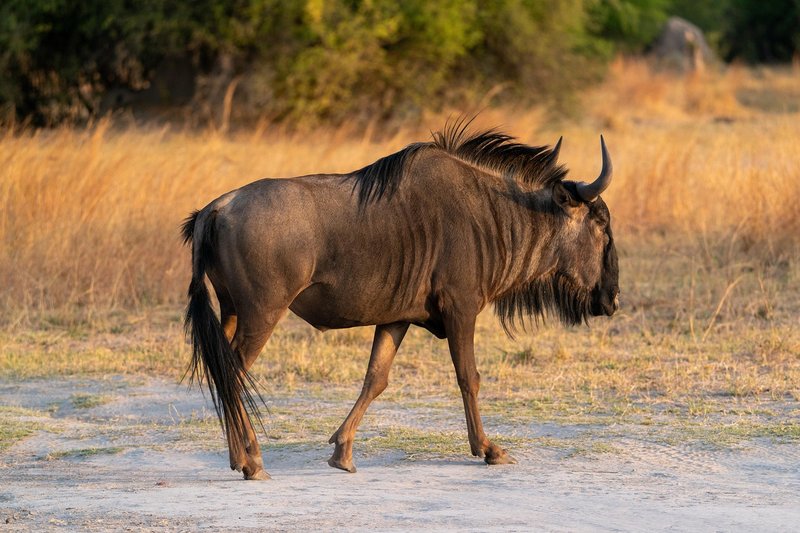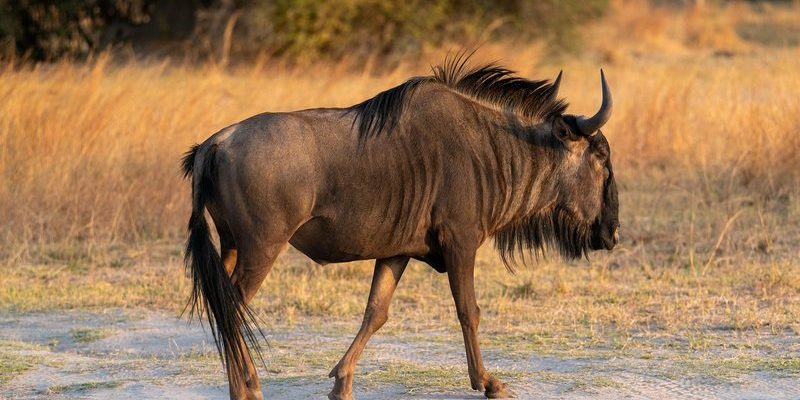
Imagine wandering through vast, dry plains with barely a drop of water in sight. Now, picture a herd of wildebeests bobbing along, seemingly unfazed by the heat and challenges around them. They’ve got some survival tricks up their sleeves that are nothing short of fascinating. By exploring their behaviors, migratory patterns, social structures, and dietary habits, we can really appreciate how wildebeests navigate the difficulties of their environment.
The Great Migration: A Journey of Survival
One of the most remarkable aspects of wildebeests is their **Great Migration**. This epic journey involves millions of these animals moving across the Serengeti-Maasai Mara ecosystem in search of fresh grazing grounds and water. Imagine stumbling upon a stampede of thousands, all pushing together, navigating through rivers and plains as they follow the rains.
This migration isn’t just a random trek; it’s a well-timed response to the seasonal availability of resources. When the rains come, it refreshes the grasslands. Wildebeests instinctively know when to move, as if they have an internal compass guiding them through the tough terrain. They leave behind dry areas and follow the lush pastures up north. This journey not only provides them with food and water but also helps them avoid predators that thrive in specific locations.
Safety in Numbers
Wildebeests are social animals, often forming large herds. There’s strength in numbers; this strategy protects them from predators, like lions or crocodiles. When traveling in groups, they can keep watch for danger more effectively. If a predator gets too close, the herd will react by stampeding, creating chaos that can confuse the attacker.
Their herd mentality also promotes survival among the young. Adult wildebeests often work together to protect calves, watching over them while they graze. It’s like a community effort, a protective shield, ensuring that the next generation thrives amid threats.
Adaptations to Harsh Climates
Surviving in harsh environments requires some impressive adaptations. Wildebeests are built to endure the hot, open grasslands of Africa. Their bodies are designed to retain moisture while they roam vast distances in search of food and water.
For instance, wildebeests have a unique digestive system that allows them to efficiently convert tough grass into energy. They can consume lower-quality forage and still thrive, which is crucial when food becomes scarce during droughts. Their ability to extract protein and nutrients from fibrous plants means they can survive in conditions that might starve other animals.
Water Conservation
You might be wondering how wildebeests manage to cope with dry spells. Water is vital for all animals, but wildebeests have a few clever tricks up their sleeves. During extremely dry periods, they can go without drinking water for days. They’ve adapted to rely on the moisture in the grasses they consume.
Furthermore, their migratory patterns often lead them to water sources just in time. They not only remember where to find water but also instinctively know when to head there based on their surroundings and past experiences. It’s a remarkable skill that significantly enhances their survival odds.
Diet: Foraging for Survival
Let’s talk about food. Wildebeests are herbivores, primarily grazing on grasses. Their diet consists mainly of bunch grasses, which are abundant in their native habitats. They’re picky eaters, favoring the tender shoots that sprout after the rains.
As they travel, they use their sharp hooves to dig into the earth to reach nutritious plants. You know, it’s a bit like a gourmet chef foraging for the best ingredients, selecting only the freshest bites. This choice helps them maintain their energy levels while coping with varying environmental conditions.
The Role of Grazing
Grazing not only sustains wildebeests but also plays a vital role in their ecosystem. As they move and feed, they help maintain the grasslands. Their grazing habits prevent overgrowth, allowing various plants and animals to thrive. This interaction is a perfect example of nature’s interconnectedness, where one species contributes to the health of the entire ecosystem.
Predator-Prey Dynamics
Living in the wild means constantly being at risk of becoming prey. Wildebeests are well aware of their place in the food chain. Their survival hinges on their ability to evade predators and react quickly to threats. This awareness is part of their instinctual behavior.
While they have strong defensive strategies, such as their herd mentality, wildebeests also rely heavily on their senses. Their keen vision and sense of smell help them detect danger from afar. You might say they have a built-in alarm system, alerting them to potential threats long before they become a danger.
Adaptive Behaviors
Wildebeests demonstrate several adaptive behaviors when faced with predators. One interesting tactic is their tendency to follow the lead of other herbivores. If zebra or antelope react to a threat, wildebeests will often follow suit, trusting the judgment of other animals they see as equals.
Moreover, wildebeests are known to gather in tightly packed groups when they sense danger. They face outward, keeping watch while protecting the younger and weaker members of their herd. That’s teamwork at its best!
In summary, the survival of wildebeests in harsh environments is a testament to their incredible adaptability, social structures, and intuitive responses to their surroundings. Their legendary migration, communal living, and unique feeding habits all play a role in ensuring their continued existence amid the challenges of the wild.
These fascinating animals remind us of the importance of resilience and adaptability in the face of adversity. As they traverse the unforgiving landscapes of Africa, they not only survive but thrive, contributing to the beauty and balance of their ecosystems. The next time you think about survival in the animal kingdom, remember the humble wildebeest and its remarkable journey through life.

